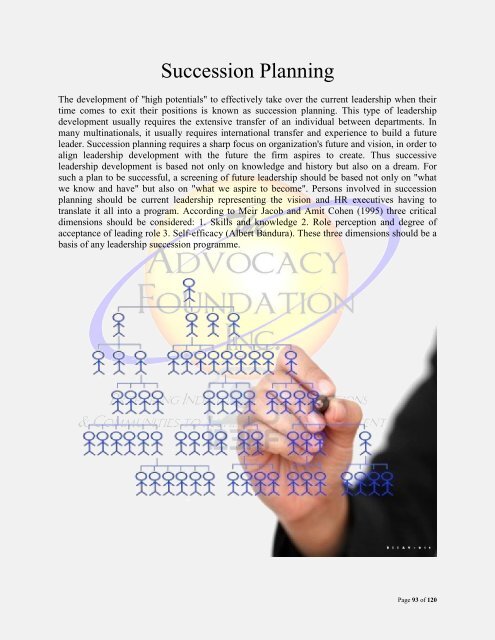Organizational Development - Vol. V, Part II
Organizational Development - Vol. V, Part II
Organizational Development - Vol. V, Part II
You also want an ePaper? Increase the reach of your titles
YUMPU automatically turns print PDFs into web optimized ePapers that Google loves.
Succession Planning<br />
The development of "high potentials" to effectively take over the current leadership when their<br />
time comes to exit their positions is known as succession planning. This type of leadership<br />
development usually requires the extensive transfer of an individual between departments. In<br />
many multinationals, it usually requires international transfer and experience to build a future<br />
leader. Succession planning requires a sharp focus on organization's future and vision, in order to<br />
align leadership development with the future the firm aspires to create. Thus successive<br />
leadership development is based not only on knowledge and history but also on a dream. For<br />
such a plan to be successful, a screening of future leadership should be based not only on "what<br />
we know and have" but also on "what we aspire to become". Persons involved in succession<br />
planning should be current leadership representing the vision and HR executives having to<br />
translate it all into a program. According to Meir Jacob and Amit Cohen (1995) three critical<br />
dimensions should be considered: 1. Skills and knowledge 2. Role perception and degree of<br />
acceptance of leading role 3. Self-efficacy (Albert Bandura). These three dimensions should be a<br />
basis of any leadership succession programme.<br />
Page 93 of 120

















